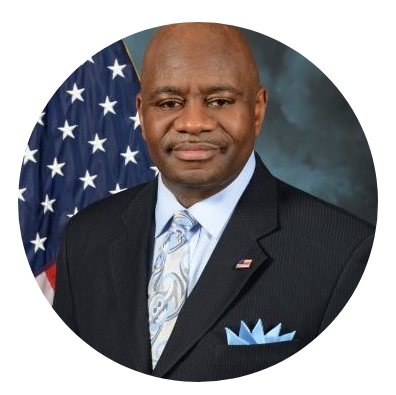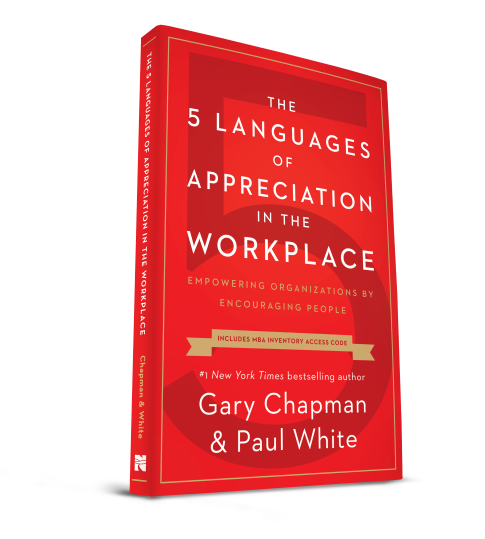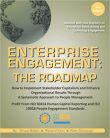At the Front Lines of Making Appreciation Work
Dr. Paul White’s Appreciation at Work book has sold over 500,000 copies to help organizations tap the power of appreciation to turn their cultures into action, and Dr. White presents teaches the process of appreciation into hundreds of training sessions. He is now enabling human resources advisory firms and independent solution providers to bring this highly measurable approach to their clients at almost any type of organization.
By Bruce Bolger
 Darrell Williams, a certified Appreciation at Work facilitator, says he experienced the power of appreciation long before he met Dr. Paul White. He served in the US Army for 20 years, while working 15 years in the White House Communications Agency, working under the George H.W. Bush, William J. Clinton, and George W. Bush administrations, which culminated with his induction into the White House Communications Agency Hall of Fame.
Darrell Williams, a certified Appreciation at Work facilitator, says he experienced the power of appreciation long before he met Dr. Paul White. He served in the US Army for 20 years, while working 15 years in the White House Communications Agency, working under the George H.W. Bush, William J. Clinton, and George W. Bush administrations, which culminated with his induction into the White House Communications Agency Hall of Fame.
He is one of two people ESM interviewed who bring Dr. Paul White’s Appreciation at Work to their business clients. The Appreciation at Work strategy helps organizations activate their cultures at the very grass roots by teaching people how to appreciate others in a way that enhances alignment and engagement in organizational principles. See ESM: Appreciation at Work Offers Culture Toolkit for Solution Providers.
“A lot of my work in government has made big demands on our employees and their families--extended trips to foreign places with often little time to sleep and a lot of pressure because the stakes often were high. To see so many people work so hard without question just brought out in me a deep appreciation for their work and how much it meant to me and more importantly to our country.”
The Need for a Process
 For Williams, appreciation comes naturally. “Even though I didn’t know the specific language of Appreciation identified by Dr. White, I made sure I took the time to get to know everyone I worked with; to learn about their stories; and what they care about. This enabled me to speak with each person in the way that affects them the most: genuine appreciation for who they are and what they do.”
For Williams, appreciation comes naturally. “Even though I didn’t know the specific language of Appreciation identified by Dr. White, I made sure I took the time to get to know everyone I worked with; to learn about their stories; and what they care about. This enabled me to speak with each person in the way that affects them the most: genuine appreciation for who they are and what they do.”
Although not speaking from this role, Williams serves as the Chief, Military Human Resources for Operations for the Defense Information Systems Agency (DISA) with over 8,000 employees in 25 states and seven countries, as he directly supports 470 joint service military members. He is also CEO of Alliance Seminars Coaching, a veteran-owned, faith-based organization that provides keynote speaking, certified workshops, and life coaching services to clients. In addition to being a master certified life coach, he is a facilitator who trained senior managers at the White House Communications Agency Training Academy to travel as Vice Presidential Team Leads, while simultaneously training mid-level managers to travel as Presidential Operations Team Leads.
“At first, I was a little bit skeptical about the Appreciation at Work service, because I thought, ‘what do I need this for, I’m already doing it. But when I read the book, I realized this was awesome. It’s a simple, scientifically based process that you can use to scale appreciation across any organization. Once I saw the benefit of having a process, I took the training, and my wife is now certified as well.”
The process includes a book for each employee an online survey tool that identifies each participant’s language of appreciation to help managers and colleagues better understand how to demonstrate gratitude for their contributions in ways meaningful to each individual.
Dr. Paul White recently held a virtual session at DISA with over 1,200 virtual attendee. In addition to outlining the process for implementing appreciation, Dr. White helped clarify the role of appreciation in organizations.
1. Appreciation isn’t the same as employee recognition. (Appreciation focuses on the person; recognition on performance.)
2. Appreciation isn’t the same as using words or compliments. Less than 50% of employees choose Words of Affirmation as their primary language of appreciation.
3. The goal of communicating isn’t to make someone “feel good.” While that may be the result, the goal is to create an effective workplace which is able to reach its goals.
4. Communicating appreciation isn’t the primary responsibility of supervisors and managers. Training both team members and leaders is key to create a culture of appreciation.
The ROI of Authentic Appreciation
 Retired from his full-time work mostly in the retail book industry, Brian Reynolds is now a facilitator and trainer for his own advisory firm Learn2Appreciation.ca, located near Toronto. The company focuses specifically on helping organizations implement Appreciation at Work based on Reynolds’s certification in the process. Click here for information on training and certification.
Retired from his full-time work mostly in the retail book industry, Brian Reynolds is now a facilitator and trainer for his own advisory firm Learn2Appreciation.ca, located near Toronto. The company focuses specifically on helping organizations implement Appreciation at Work based on Reynolds’s certification in the process. Click here for information on training and certification.
In his current role, he says, he has the luxury to do what he wants to do, “and what I really enjoy doing is having a positive effect on people; to make someone’s day. I’m trained and certified in the Appreciation at Work program because it provides a process for organizations to not only make people happier at work but to enhance productivity.”
To Reynolds, Appreciation at Work can have a concrete impact on productivity and quality. “When people feel truly appreciated for how they contribute to success, they naturally go that extra mile to do what they can do to advance the cause of the organization, whatever that may be. I saw that proven time and again in my many years in the book industry.”
The business model for providing the service, he says, is based on providing all employees with the books and access to the survey for their individual assessment to identify their specific language of appreciation. The learning process includes leading coaching sessions to help all participants understand how to strategically and authentically use the right language of appreciation to support the key behaviors and actions that drive organizational success. Quarterly or regularly timed check in sessions ensure sustainability of the process.
“In addition to having a happier culture, Appreciation at Work can measure the results in higher productivity, quality, and general reliability, because everyone knows what they have to do to make the enterprise more successful and feels happy about doing it.”
For More Information
Paul White, Ph.D.
President, Appreciation at Work
(316) 681-4431
Click here for information on the training and certification program for companies or individual solution providers.
Darrell Williams, HOF
CEO, Alliance Seminars Coaching
(410) 925-8269
Brian Reynolds
Facilitator/Trainer
Learn2Appreciate
(416) 996-4642
Click here to get ESM news delivered each week.
Master the “S” of Environmental, Social, Governance (ESG), A.k.a. Stakeholder Capitalism
The Enterprise Engagement Alliance at TheEEA.org is the world’s first and only organization that focuses on outreach, certification and training, and advisory services to help organizations achieve their goals by fostering the proactive involvement of all stakeholders. This includes customers, employees, distribution and supply chain partners, and communities, or anyone connected to an organization’s success.
Training and Thought Leadership
- Founded in 2008, the Enterprise Engagement Alliance provides outreach, learning and certification in Enterprise Engagement, an implementation process for the “S” or Social of Stakeholder Capitalism and Human Capital Management and measurement of engagement across the organization.
- The Enterprise Engagement Alliance provides a training and certification program for business leaders, practitioners, and solution providers, as well as executive briefings and human capital gap analyses for senior leaders.
- The EEA produces an education program for CFOs for the CFO.University training program on Human Capital Management.
- Join the EEA to become a leader in the implementation of the “S” of ESG and Stakeholder Capitalism.
- The ESM information portal and The Enterprise Engagement Advisors Network solution provider marketplace cover all aspects of stakeholder engagement, and the EEA information library lists dozens of resources.
- The RRN information portal and Brand Media Coalition marketplace address the use of brands for gifting, incentives, recognition, and promotions. The BMC information library provides information and research resources.
Video Learning
The EEA Human Capital Management and ROI of Engagement YouTube channel features a growing library of 30- to 60-minute panel discussions with leading experts in all areas of engagement and total rewards.
- Enterprise Engagement for CEOs: The Little Blue Book for People-Centric Capitalists. A quick guide for CEOs.
- Enterprise Engagement: The Roadmap 5th Edition implementation guide. A comprehensive textbook for practitioners, academics, and students.
Enterprise Engagement Advisory Services
The Engagement Agency helps:
- Organizations of all types develop strategic Stakeholder Capitalism and Enterprise Engagement processes and human capital management and reporting strategies; conduct human capital gap analyses; design and implement strategic human capital management and reporting plans that address DEI (Diversity, Equity, and Inclusion), and assist with managed outsourcing of engagement products and services.
- Human resources, sales and marketing solution providers profit from the emerging discipline of human capital management and ROI of engagement through training and marketing services.
- Investors make sense of human capital reporting by public companies.
- Buyers and sellers of companies in the engagement space or business owners or buyers who seek to account for human capital in their mergers and acquistions.
For more information: Contact Bruce Bolger at Bolger@TheICEE.org or call 914-591-7600, ext. 230.















